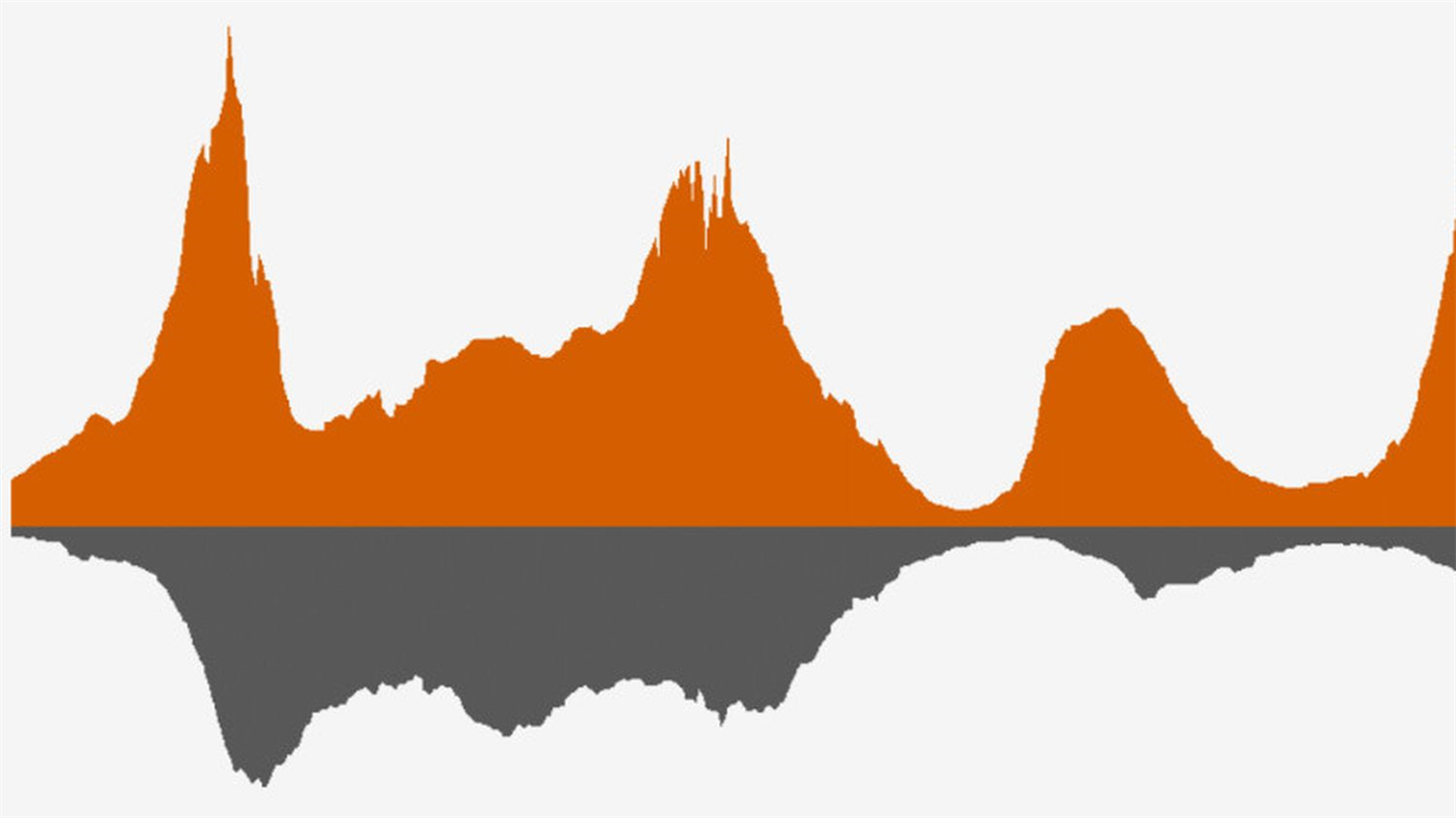The end of the year holidays are approaching, and indicators of the Covid-19 epidemic continue to get carried away. This fifth wave, which began in mid-October, is a reminder of what happened in the fall of 2020, when confinement, lighter than that of spring 2020, was introduced in France.
A year later, the vaccine was a game changer. So what does this fifth wave look like compared to a year ago? Explosion in the number of cases, slower increase in deaths, effects of vaccination: infographics in support, franceinfo takes stock.
The number of contaminations explodes
The incidence rate, that is to say the number of contaminations over the past week per 100,000 inhabitants, reached 411 on December 2, 2021. This level had not been observed since November 9, 2020, the waves spring and summer 2021 having been less strong.
These new contaminations are progressing rapidly, and at a rate similar to that of the fall of 2020. This can be seen from the infographic below, on which the current epidemic wave (in red) follows the same growth rate than the fall 2020 wave (in gray). And given this progression, it is not impossible that this fifth wave exceeds the values of that of a year ago.
The rise in contamination concerns the whole of France, but is even more marked in certain regions, as our dashboard shows. The incidence exceeds 500 in 21 departments, and even reaches levels above 600 in eight of them: Ardèche (808), Drôme (704), Hautes-Pyrénées (640), Jura (635 ), Lot-et-Garonne (630), Alpes-de-Haute-Provence (620), Haute-Savoie (603) and Rhône (603).
The increase in hospitalizations seems slower
Another indicator on the rise: new hospitalizations, which went from less than 200 per day in mid-October to 913 per day on average on December 5. New critical care entries were less than 80 per day in mid-October, but are now reaching 200 per day. On December 3, the number of people in intensive care exceeded 2,000, a threshold below which we had passed on September 31.
Compared to the wave of autumn 2020, the increase in these hospital indicators seems more timid in 2021. But caution is required, because the current increase should continue for a few more days: there is generally a lag of one. week between the case curve and that of hospitalizations. Based on forecasts from the Institut Pasteur, Olivier Véran estimated, Friday, December 3, on franceinfo, that “we could be at 3,000 Covid patients in intensive care within ten days”.
Should we see, despite everything, the effect of vaccination? This is what the hospital admissions data suggest based on vaccination status. For the same population, unvaccinated people are more likely to be hospitalized than those who have received a full vaccination schedule, with or without a booster dose. The following graph shows that the current increase in hospitalizations is more observed among the unvaccinated.
This influx of patients is however sufficient to cause tension. THEThe Hospices Civils de Lyon (HCL), which brings together 13 public hospitals, announced Monday, December 6 the launch of their white plan. “Despite the mitigation of the hospital impact made possible by the vaccination of a large part of the population, the number of patients hospitalized due to a diagnosis of Covid-19 has increased sharply over the past two weeks”, explains the management of the HCL in a press release.
Deaths are increasing, but less quickly than in fall 2020
Hospital deaths due to Covid-19 are also on the rise. Currently, there are around 86 per day, compared to 26 in mid-October. But compared to the fall 2020 wave, this rise is slower.
Ultimately, observing the death curve for Covid-19 mirroring that of cases speaks for more than one reason. While until spring 2021, the progression of the death curve (in dark gray below) more or less followed that of new contaminations (in red), there has been a decorrelation between these two indicators since summer 2021, when a large majority of French people have been vaccinated.
Currently, the ratio between cases and death is one new death for 493 new infections. In the fall of 2020, when there were so many new cases, there was one death for 157 contaminations. A reassuring observation for the moment, but that will have to be confirmed in the coming weeks. And which could define, with the rhythm of injections of booster doses, the direction taken by the executive concerning possible restrictions.
A big unknown remains: what will be the impact of the Omicron variant? Depending on its contagiousness and its resistance to vaccines, which remain to be defined, the health situation in France could change in the coming weeks.
* Methodology : to define the dates of the two waves and the ‘J zero’ indicated in the graphs, we analyzed the growth rate of the incidence between a day D and a day D-7. The growth rate is the rate of increase of the curve. If it is 100%, the indicator doubles; if it is at 0%, it stagnates, and if it is negative, the indicator decreases. We set the ‘J zero’ on our graphs when the incidence growth rate exceeded 50%: this is when the curve begins to increase further, thus corresponding to the idea of a wave. epidemic. The D0 is thus set for October 10, 2020 for the fall 2020 wave and November 17, 2021 for the current wave.
